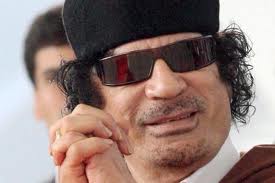
Paris, April 28: Muammar Gaddafi's regime agreed to fund French President Nicolas Sarkozy's 2007 election campaign to the tune of 50 million euros, a news website reported Saturday, publishing what it said was documentary evidence.
The 2006 document in Arabic, which website Mediapart said was signed by Gaddafi's foreign intelligence chief Mussa Kussa, referred to an "agreement in principle to support the campaign for the candidate for the presidential elections, Nicolas Sarkozy, for a sum equivalent to 50 million euros."
The left-wing investigative website made similar assertions on March 12, based on testimony by a former doctor of a French arms dealer alleged to have arranged the campaign donation, which Sarkozy slammed as "grotesque."
"If he had financed it, I wasn't very grateful," Sarkozy said sarcastically in a television interview, in an apparent reference to the active role that France played in the Nato campaign that led to the strongman's ouster last year.
The latest report comes as Sarkozy trails Socialist rival Francois Hollande in opinion polls ahead of the run-off second round of presidential elections on May 6.
The green-bordered note published and translated by Mediapart said the agreement followed a meeting on October 6, 2006, attended by Gaddafi's spy chief Abdullah Senussi, the head of Tripoli's African investment fund Bashir Saleh, close Sarkozy associate Brice Hortefeux and arms dealer Ziad Takieddine.
A lawyer for Takieddine denied to Mediapart that her client was present but said, "he believes this document is credible, given the date and the persons named."
The latest report by Mediapart, a respected source seen as opposed to Sarkozy's right-wing government, strengthens long-running allegations that French political camps have benefited financially from kickbacks on arms deals with foreign regimes. Gaddafi's son Seif al-Islam last year claimed that Libya financed Sarkozy's campaign, after Paris abandoned its improving ties with Libya and threw its weight behind the rebellion that eventually deposed and killed the dictator.
"Sarkozy must first give back the money he took from Libya to finance his electoral campaign. We funded it and we have all the details and are ready to reveal everything," Seif told the Euronews network.
When asked about Seif's comments during the March 12 interview on France's TF1 television, Sarkozy replied: "I am sorry to see you in the role of a spokeswoman for Gaddafi's son, frankly I've known you in better roles."
"It's grotesque and I am sorry that I am being interrogated about declarations of Gaddafi or his son on an important channel like TF1," Sarkozy said.
"When one quotes Mr. Gaddafi, who is dead, his son, who has blood on his hands, that is a regime of dictators, assassins, whose credibility is zero... frankly, I think we have sunk low enough in the political debate."
The report published by Mediapart in March, which also referred to "BH" -- understood to be Hortefeux, who later became Sarkozy's interior minister -- was written by private operative Jean-Charles Brisard.
Takieddine is already under investigation for his alleged role in the funding of Edouard Balladur's failed 1995 presidential campaign for which Sarkozy was spokesman.
Investigators suspect Balladur's camp collected kickbacks on a deal to sell submarines to Pakistan and that a Karachi bombing that killed 11 French engineers was carried out by Pakistani agents in revenge after promised bribes went unpaid.
Sarkozy has always denied any wrongdoing in the 1995 campaign finance arrangements.






Comments
Add new comment